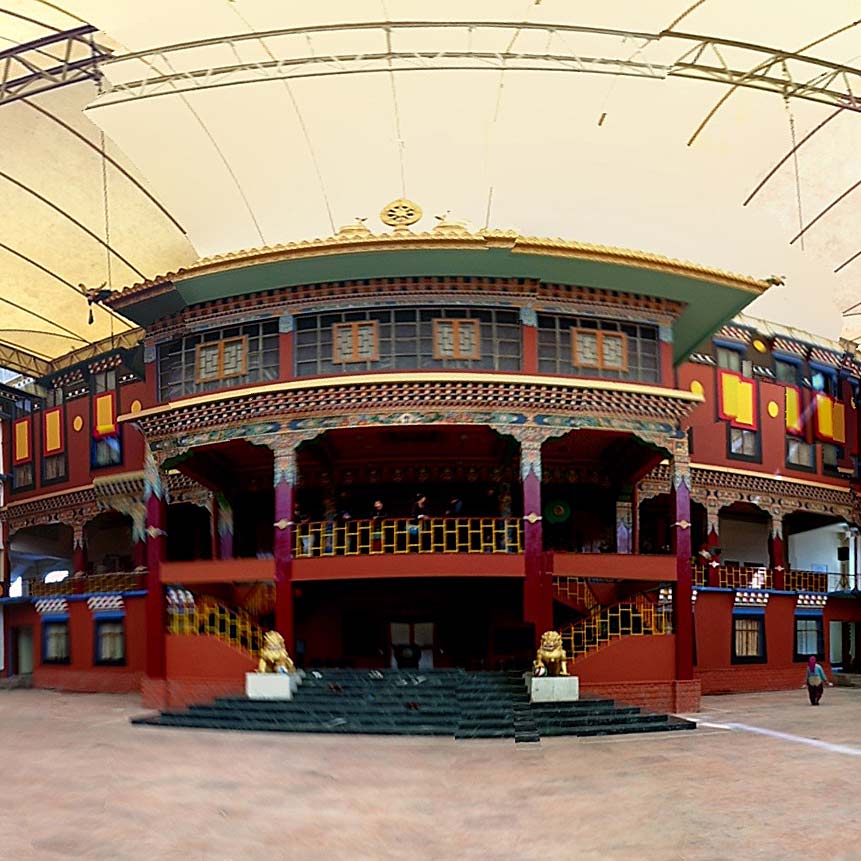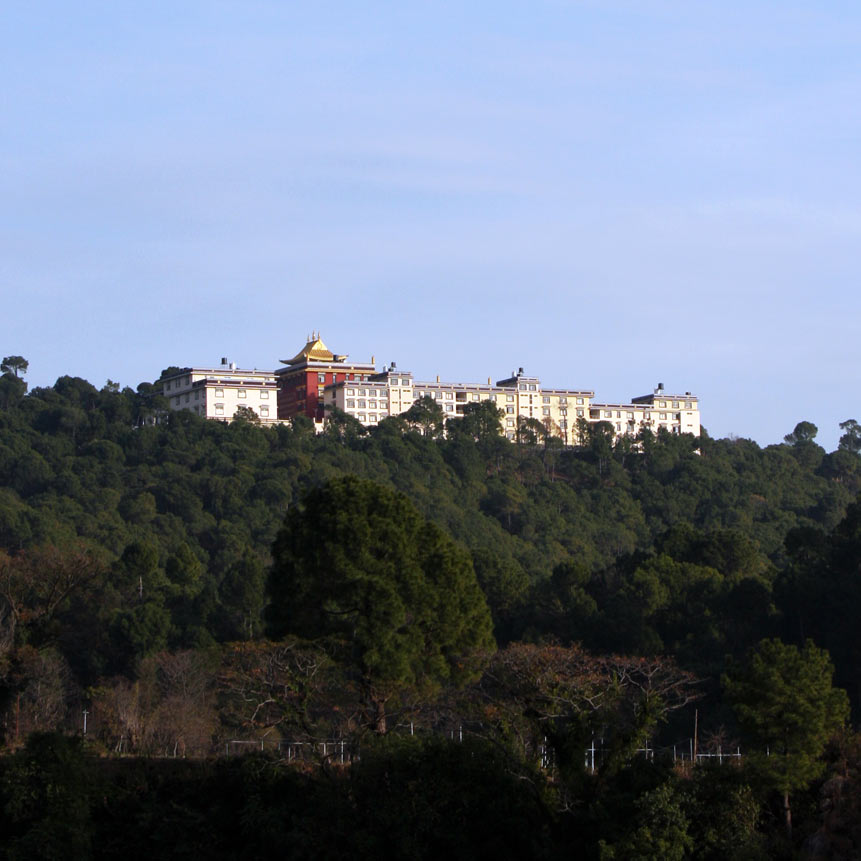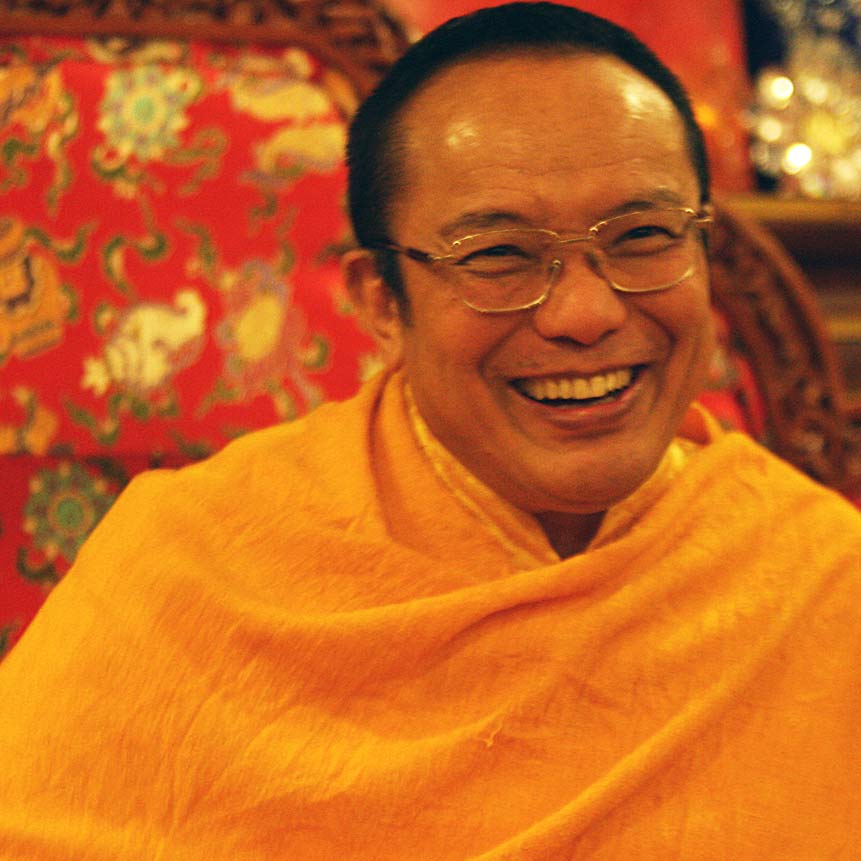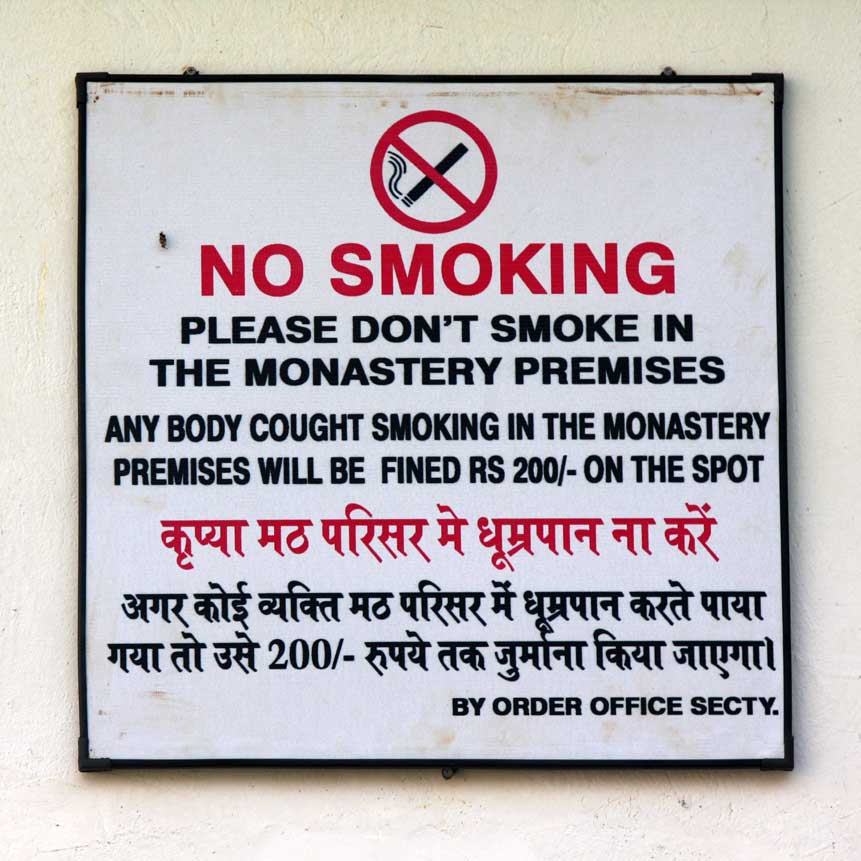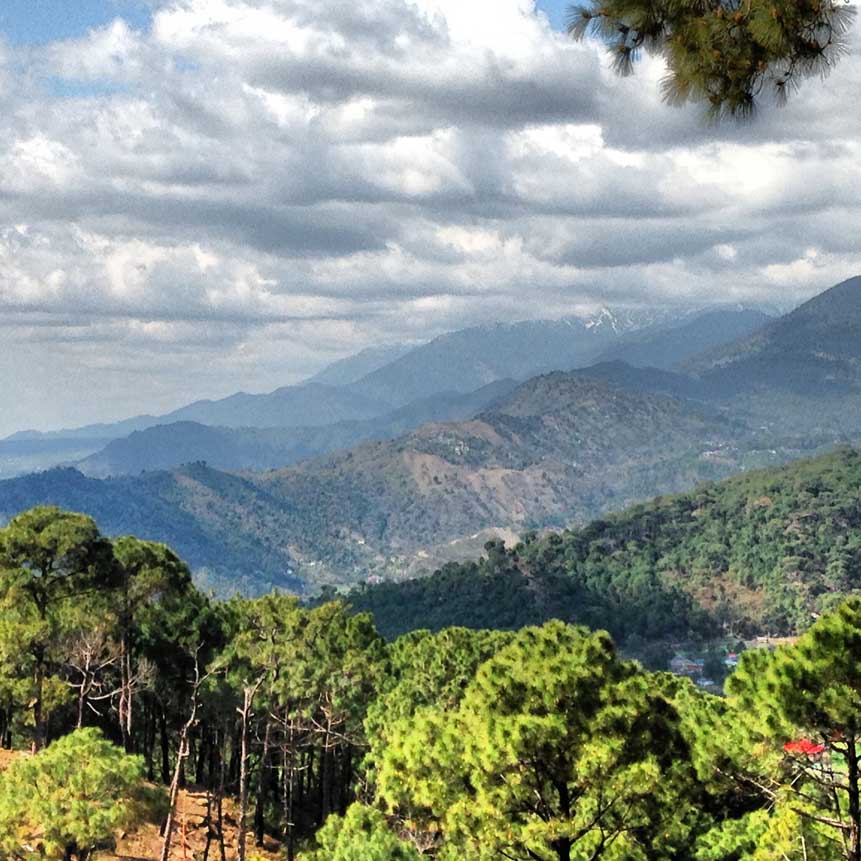About Sherabling
If you search online for information about ‘Sherabling’, you’ll probably find the following:
• Palpung Sherabling is a Buddhist monastery located in Kangra valley, in the northern Indian district of Himachal Pradesh, which borders with Tibet.
• It is the monastic seat of the 12th Kenting Tai Situpa (aka Tai Situ Rinpoche), who is the main guru of H.H. the 17th Karmapa, Orgyen Trinlay Dorje, (the head of the Karma Kagyu lineage of Tibetan Buddhism).
• The monastery provides a complete range of facilities for monks to study and practice Buddhism (Palpung means ‘glorious union of study and practice”)
• it can accommodate over 500 monks, has 3 shrine halls, 6 shrine rooms. It also has full retreat facilities for monks and nuns and individual cabins for lay practitioners.
etc, etc
what they don’t really tell you is this:
It’s pretty remote; although the nearest town, Bir, is only a few miles away, that, too, is pretty remote.
The roads become rocky tracks long before you arrive… and if you’re travelling by vehicle, you literally bounce your way in and out. It’s isolated; not really somewhere that you tend to be passing on your way to somewhere else. It’s an end destination; a hidden kingdom.
The monastery and the neighbouring area has a strong Tibetan presence. Most of the people I met spoke Tibetan, and I would be greeted with a friendly ‘Tashi delek’ wherever I went… with the occasional ‘namaskar’ from the local Indians who worked at the monastery. You’re surrounded and humbled by delightfully uncomplicated people: kind, patient, generous, calm, frugal, happy, engaging, curious, peace-loving, wise… all of them filled with faith and devotion… and all gifted with well-honed traditional craft skills.
All the various buildings that comprise the ‘monastery’ are spread over 80 acres of gentle, pine forested woods, connected by a network of trails. You’re surrounded by nature and more in tune with it… aggressive, wild monkeys travel unchallenged in troops, strange bird calls wake you at dawn. You’re at a relatively high altitude… at the foothills of the Himalayas. Here the air is cleaner… and when it rains it feels like the whole world is vibrating… and the sound of thunder goes on for minutes, as it echoes and reverberates along the surrounding hills and valleys. It’s almighty.
Within the monastery is a small ‘nunnery’; a small retreat centre for nuns (appx 25), which sat right next to the visitor’s retreat accomodation in which I stayed. My room was delightfully spartan. a big, bare bedroom with twin beds, a little kitchen area and bathroom. I washed my clothes in a bucket filled from the shower head (which protruded from the bathroom wall with no shower curtain)… a simpler way of living and more ‘stripped-to-essentials’… where ‘luxuries’ included ‘yogi’ herbal teas and several books that I’d brought with me. I’d brought my laptop with the intention of doing some work (which i never got round to). Other than that, there was very little clutter… virtually no distractions.
I wasn’t there on any official retreat… I was not required to be anywhere at any time… no one gave me instruction… but I HAD come seeking companionable solitude. Our small party met up at regular times during the day, but outside of that, I spent a lot of time by myself in relative silence. I meditated a lot.
It’s a more wholesome way of life. Although I wasn’t on retreat, I did have to abide by certain rules, including a ban on smoking and drinking. Good challenges to face. (I found it much easier to refrain from these bad habits when nobody else around you was doing them either).
Without the anaesthetising effects of alcohol, smoking, television and Facebook (a full-on digital detox), you are more inclined to look inwardly and face yourself… to sit with the discomfort of withdrawal… and search for the root causes of your addictions.
Food is prepared fresh everyday. No McDonalds for (literally hundreds of) miles around.
Unlike many other parts of india, the tap water was safe to drink.
Early to bed, early to rise.
It’s very tranquil. Every now and then, the sounds of nature are disturbed by monks chanting, or the cacophonous sound of Tibetan horns or clashing cymbals drifting up the valley from the monastery below… the occasional waft of incense (made at the monastery) heightens the experience.
Time operates on a completely different scale… no one rushes around… and there’s less chasing…
You don’t spend your time thinking about earning money… or paying bills…
It’s less tarnished by modern consumerism… there isn’t really anything to buy… there are a couple of gift shops, but once you’ve been in once there’s no great attraction (and, anyway, the official monastery shop never seemed to be open).
It’s a completely different vibe. It feels entirely less stressful.
Message: all you need, is less
Being stripped of your usual distractions, you become more aware of your surroundings. You’re more receptive to signs and messages… and to serendipitous magic!
In these conditions it’s easier to gain clarity, hear your own voice and experience insights, realisations and transformations. It’s a place to recalibrate your moral compass.
I learnt a lot in 6 weeks.
The nuns (and some monks) who are there on retreat, don’t come outside of the retreat centre for 3 years! Imagine that.
–
In recognition and gratitude for the learnings, love and transformations that I experienced there.. and to help secure these teachings and opportunities for future generations, I will be donating 10% of all profits directly to Sherabling. I believe that places of purity like this should be cherished and supported.
If you’d like to see more photos and a little video from my time at Sherabling, go HERE
You can find out more about Sherabling and the other interests and teachings of Tai Situ Rinpoche HERE


